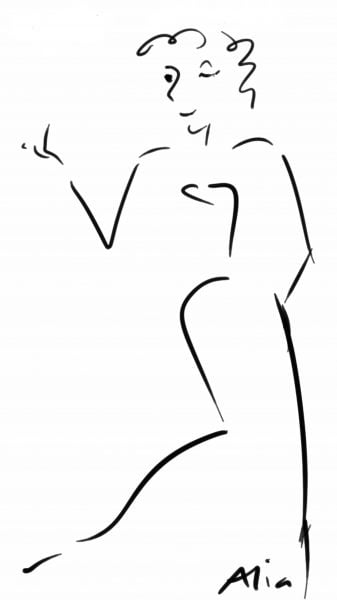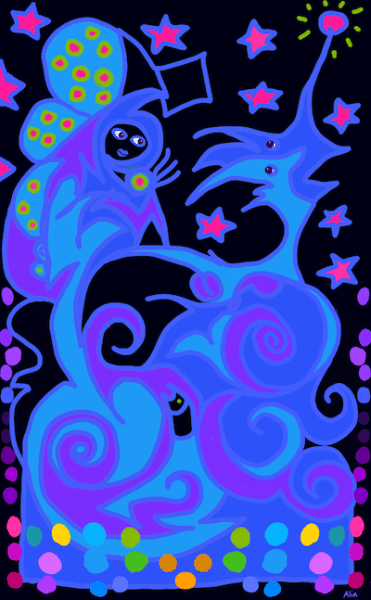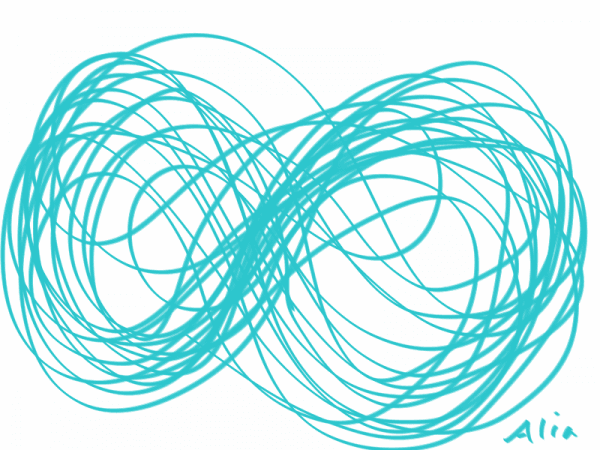In 2010 I saw this improv jazz ensemble at Barbés, a tiny little club in Brooklyn. The musicians were an eclectic assortment rather than an established band. They played music with no structure, before each piece asking the audience for one word to get them going (like many comedy improv ensembles).
There was no song. There was no container. They built it as they played. Maybe half a dozen guys. The headliner was an Arabic trumpeter named Ibrahim Maalouf. Maalouf plays a quarter-tone trumpet invented by his father in the 60s (yes they exist–Amir al Saffar plays one as well).
The room was packed, the music thrilling; each musician played with humor and tenderness. I was standing next to the piano. Oh my god, the delicacy with which this guy played. Pablo Vergara listened with this whole body to the other musicians, utterly attuned.
His hands hovered over the keys, and I watched as he sometimes threw in a few notes, sometimes didn’t–his hand would waft towards the keys, and then draw back; other times he played full on. His every move was in service to the music that created itself out of nothing, in the moment, in the hands of the group.

This is what I mean about quality of movement, and about the textures and dynamics of sound. This is what I mean about deep listening. Each performer has to be incredibly open to to each other performer at every moment, and this includes the dancer. We listen with our whole bodies, our whole souls, the better to experience and express the fullness of the music.
Can I just say I LOVE the internet? I found the exact show, recorded in its entirety. Listen to it here: https://www.newsounds.org/story/2428-no-cover-ibrahim-maalouf/
As you listen, notice the stunning range of sound textures, the dynamics of pitch and volume. As you dance this music, tease out the thread of one instrument and follow that for a while, then try another. Take a horn for a while, then get into the drum or the clarinet. Practice following your instrument through the tapestry of other voices. Embody the themes of the music as whole, rising, swelling, subsiding, delicate, intense. Just feel it.
Musicality is a core element of Oriental dance.
Because we have micromovement, we are free to adapt our movements to embody and express all the subtle nuances that we hear and feel from the music.
Part of it is Timing–knowing when to change, to pause, to speed or slow, to hit an accent, because that is what the music does. Knowing because you can feel it coming, rather than because you have memorized a recording.
But it is also responding to dynamics in the music–coloring our movement with its timbres, force, volume, and pitch. Allowing ourselves to feel and express its emotional content. Having enough confidence in ourselves as dancers to react with authority, to be with the music, to trust our bodies to saw what we feel in our heart.
I made the class Embodiment to help dancers explore musicality in an organized, thoughtful way. But as we have progressed through the BEDROCK series, I’ve found myself wanting to explore it in a more organic way as well. Sooo…
Our next series will be BEDROCK 3: Musicality (it even rhymes ; )
Each week we will listen, to samples of music, and to how we feel that music in our bodies. We will explore how we might interpret the musical dynamics though our physical expression. We will follow physical demonstrations of musicality, and we will have free improvisation time to explore music with our own bodies.
BEDROCK 3: Musicality runs Tuesdays at 4pm EDT from June 8-July 6. See this in your time zone (add to calendar button in link). Each class is recorded (instructor view only). Each recording is available for a full week. Registration is now open.






No comment yet, add your voice below!